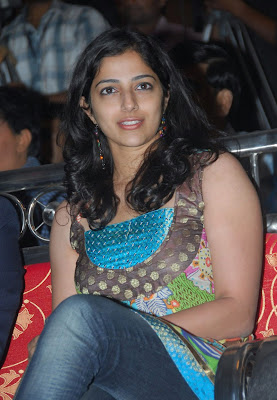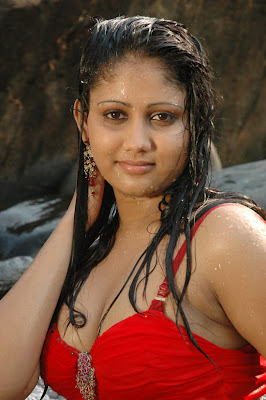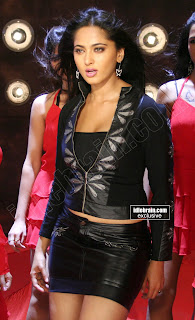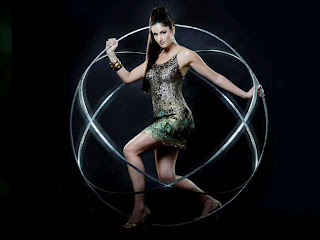:INSTRUCTIONS:
*
This has reference to your on-line application for the post of Chargeman(Tech./ Non-Tech.) in Ord. Fys.
*
Admission for the test will be strictly on submission of this Admit Card.
*
You are required to bring Blue/Black Ink Ball Point Pen only for marking on OMR Answer Sheet. Candidate is not allowed to carry any paper, notes or books, correction fluid, calculator, mobile phone, electronic diary, alarm clock, scanning device, writing pad, pencil box, beepers and cameras etc. in the examination hall. Any candidate found in possession of such unauthorized material or indulging in copying or adopting unfair means will be summarily disqualified.
*
Question paper will be of objective type and consists of one paper only.
o For Technical trades, it will be with two parts, viz. Part-I & Part-II. (For Discipline Chemical, Metallurgy & Clothing, Part-II will have two groups as Group-A & Group-B, based on Diploma or B.Sc standard respectively. Candidates from Chemical, Metallurgy & Clothing discipline will have the option to answer either Group-'A' or 'B' as per their choice).
o Candidates appearing for 'Non-Technical' discipline, question paper will be of 'One Part' only.
*
Candidate should be very careful towards filling up of Roll No. on OMR Answer Sheet. Any mistake will lead to loss of identity and merit position. No correspondence will be entertained in this respect at later stage.
*
Merit List: Candidates will be placed in the merit list in the order of higher marks with 'positive' score only.
*
If more than one candidate obtain same total marks, merit position will be decided by age seniority.
*
Negative Marking: 0.25 Marks will be deducted for every wrong answer.
*
On completion of the examination, candidates will be short listed as per merit position vis-a-vis no. of vacancies. An intimation to short listed candidates will be sent. The candidates must visit the OFB website (www.ofbindia.gov.in) to know the roll no. of short listed candidates. Such candidates must forward (by regd. Post/speed post/courier) 'attested copy of certifcates' in support of - i. Date of Birth, ii. Diploma/Degree Certificate based on which eligibility claimed & iii. Category/Cast Certificate at the following address-
Secretary
Ordnance Factory Board (Section : A/HRD), 10-A, S.K.Bose Road Kolkata-700 001
*
Candidate is advised to retain this admit card carefully. It will be required in the event of final selection.
Attention Please !!
Publish Your Ad here !!
You can publish your ad on this website .
Just for nothing.
Contact by E-Mail for More.
You can publish your ad on this website .
na wallpapers highlights scroll !!
bid
Electric Motors Some Basic Notes
Electric Motors Some Basic Notes
Electric Motors Some Basic Notes
i found the much useful points of electric in this paper.
you can download from ::
just for you !!
mworld.
Electric Motors Some Basic Notes
i found the much useful points of electric in this paper.
you can download from ::
http://www.scribd.com/doc/33999492/Electric-Motors-Some-Basic-Notes
just for you !!
mworld.
Labels:
defence,
key,
odf,
ordnance,
ordnance factory board,
ordnancefactoryboardkeysample.,
sample question
ordnance factory board sample question on web.
Here is the odf sample questions given in the website ::
ofbsqi
You can download from : below links too ::
http://www.mediafire.com/file/itd222zymxm/ofbsqi.pdf
http://rapidshare.com/files/405135808/ofbsqi.pdf
http://hotfile.com/dl/52754983/72afd4a/ofbsqi.pdf.html
Here is the Key of the above questions ::
Sample Question Key of Ordnance Factory Board
You can download from :: below links ::
http://depositfiles.com/files/oattq29fr
Download sample question key of ordnance factory board.rar for free on uploading.com
http://hotfile.com/dl/52762941/22c7691/sample_question_key_of_ordnance_factory_board.txt.html
http://sharingmatrix.com/file/11230981/sample_question_key_of_ordnance_factory_board.rar
ordnance factory board key sample question
ordnance factory board key sample question
ordnance factory board key sample question
..
mworld
ofbsqi
You can download from : below links too ::
http://www.mediafire.com/file/itd222zymxm/ofbsqi.pdf
http://rapidshare.com/files/405135808/ofbsqi.pdf
http://hotfile.com/dl/52754983/72afd4a/ofbsqi.pdf.html
Here is the Key of the above questions ::
Sample Question Key of Ordnance Factory Board
You can download from :: below links ::
http://depositfiles.com/files/oattq29fr
Download sample question key of ordnance factory board.rar for free on uploading.com
http://hotfile.com/dl/52762941/22c7691/sample_question_key_of_ordnance_factory_board.txt.html
http://sharingmatrix.com/file/11230981/sample_question_key_of_ordnance_factory_board.rar
ordnance factory board key sample question
ordnance factory board key sample question
ordnance factory board key sample question
..
mworld
Labels:
defence,
key,
odf,
ordnance,
ordnance factory board,
ordnancefactoryboardkeysample.,
sample question
Gear Types
Gear Types
* Bevel gears are intended to operate on axes that intersect, usually at a 90 degree angle, to work around corners.
* Differential gears link two shafts through a covering, forcing the total of the rotational angles of the shafts to be the same as the rotational angle of the covering.
* Helical gears have angled teeth to create a thrust load on the gears when they mesh. Car transmissions often have these.
* Herringbone gears conduct power and motion between non-intersecting, parallel axes that may or may not have a center groove, with each tooth making two opposite helices.
* Hypoid gears are similar to bevel gears but differ by operating on non-intersecting axes.
* Industrial gears are round mechanical components that have "teethed" circumferences, allowing them to interconnect with corresponding teethed gear wheels or parts; these gear pairs transfer/reverse motion, increase/decrease rotational speed and torque or sychronize axes.
* Metric gears are defined by the length in millimeters of the pitch circle diameter per tooth.
* Miter gears are bevel gears put together with equal numbers of teeth and axes that are usually at right angles.
* Planetary gears come sets of usually two, or more, that operate on or inside larger industry gears. Planetary gears make drastic gear ratios possible.
* Plastic gears are made primarily of plastic, sometimes with both metal and plastic components. These gears are generally cost effective and light; some are injection molded plastic gears.
* Rear end gears are bevel gears arranged into epicyclic configurations which transmit torque and rotation through three shafts.
* Spline gears contain a series of ridges on a driveshaft that even out rotation speed of the companion piece.
* Sprockets are gears with metal teeth that enmesh with chains.
* Spur gears are cylinder shaped gears that have both straight and parallel teeth and work on parallel axes.
* Straight bevel gears have straight teeth that radiate from a center point.
* Spiral bevel gears are similar to helical gears and have a higher potential load transmission compared to straight bevel gears, which is achieved by cutting the teeth in a curved shape.
* Worm gears have a curved and recessed throat that gives the worm access to the worm gear teeth. Usually they are made of bronze, iron or steel.
..
mworld
* Bevel gears are intended to operate on axes that intersect, usually at a 90 degree angle, to work around corners.
* Differential gears link two shafts through a covering, forcing the total of the rotational angles of the shafts to be the same as the rotational angle of the covering.
* Helical gears have angled teeth to create a thrust load on the gears when they mesh. Car transmissions often have these.
* Herringbone gears conduct power and motion between non-intersecting, parallel axes that may or may not have a center groove, with each tooth making two opposite helices.
* Hypoid gears are similar to bevel gears but differ by operating on non-intersecting axes.
* Industrial gears are round mechanical components that have "teethed" circumferences, allowing them to interconnect with corresponding teethed gear wheels or parts; these gear pairs transfer/reverse motion, increase/decrease rotational speed and torque or sychronize axes.
* Metric gears are defined by the length in millimeters of the pitch circle diameter per tooth.
* Miter gears are bevel gears put together with equal numbers of teeth and axes that are usually at right angles.
* Planetary gears come sets of usually two, or more, that operate on or inside larger industry gears. Planetary gears make drastic gear ratios possible.
* Plastic gears are made primarily of plastic, sometimes with both metal and plastic components. These gears are generally cost effective and light; some are injection molded plastic gears.
* Rear end gears are bevel gears arranged into epicyclic configurations which transmit torque and rotation through three shafts.
* Spline gears contain a series of ridges on a driveshaft that even out rotation speed of the companion piece.
* Sprockets are gears with metal teeth that enmesh with chains.
* Spur gears are cylinder shaped gears that have both straight and parallel teeth and work on parallel axes.
* Straight bevel gears have straight teeth that radiate from a center point.
* Spiral bevel gears are similar to helical gears and have a higher potential load transmission compared to straight bevel gears, which is achieved by cutting the teeth in a curved shape.
* Worm gears have a curved and recessed throat that gives the worm access to the worm gear teeth. Usually they are made of bronze, iron or steel.
..
mworld
Labels:
gears,
mechanical,
ofb,
ordnance factory board,
types of gears.
Gears Terms
Gear Terms
Backlash - The distance the width of a tooth space surpasses the thickness of the engaging tooth on the pitch circles of industry gears.
Bore - The diameter of the hole in a industry gear.
Bull - The larger gear of a set of industry gears.
Center Distance (CD) - The smallest distance between the axes of non-intersecting, mating industry gears.
Coupling Sprockets - Used for connecting two non-continuous shaft ends of industry gears.
Dedendum (DED) - The distance, radial or perpendicular, between the bottom of the gullet and the pitch circle on industry gears.
Gullet - The distance between the teeth of industry gears.
Hob - A cutting tool used for cutting teeth in industry gears by using a hobbing machine.
Hub - An extension projecting from the side of industry gears that creates width to a part so it can be mounted on a shaft.
Hub Style - The type of style of the hubs on industry gears. Type 'A' indicates there is no hub on the industry gear; type 'B' indicates there is a hub on only one side of the industry gear; type 'C' indicates there is a hub on both sides of the industry gear.
Module (MOD) - The pitch diameter's ratio to the number of teeth on the industry gear expressed in millimeters.
Mounting Distance (MD) - The distance from the crossing point of the axes to the location surface of industry gears.
Pinion - The smaller industry gear of a set of industry gears.
Pitch - The size of the teeth of industry gears.
Rack - A steel bar with teeth on one side where a pinion can be driven across. Also a
spur gear with an unlimited pitch diameter.
Ratio - The distance from the center of industry gears to the point where the teeth or edges come into contact with one other. It is directly related to the size of one industry gear compared to the other.
Teeth - Edges or outside of industry gears have pits and extrusions to interlock with other industry gear parts. The teeth of the industry gears prevent slippage between the gears and promote consistency and regularity in the industry gears.
..
mworld
Backlash - The distance the width of a tooth space surpasses the thickness of the engaging tooth on the pitch circles of industry gears.
Bore - The diameter of the hole in a industry gear.
Bull - The larger gear of a set of industry gears.
Center Distance (CD) - The smallest distance between the axes of non-intersecting, mating industry gears.
Coupling Sprockets - Used for connecting two non-continuous shaft ends of industry gears.
Dedendum (DED) - The distance, radial or perpendicular, between the bottom of the gullet and the pitch circle on industry gears.
Gullet - The distance between the teeth of industry gears.
Hob - A cutting tool used for cutting teeth in industry gears by using a hobbing machine.
Hub - An extension projecting from the side of industry gears that creates width to a part so it can be mounted on a shaft.
Hub Style - The type of style of the hubs on industry gears. Type 'A' indicates there is no hub on the industry gear; type 'B' indicates there is a hub on only one side of the industry gear; type 'C' indicates there is a hub on both sides of the industry gear.
Module (MOD) - The pitch diameter's ratio to the number of teeth on the industry gear expressed in millimeters.
Mounting Distance (MD) - The distance from the crossing point of the axes to the location surface of industry gears.
Pinion - The smaller industry gear of a set of industry gears.
Pitch - The size of the teeth of industry gears.
Rack - A steel bar with teeth on one side where a pinion can be driven across. Also a
spur gear with an unlimited pitch diameter.
Ratio - The distance from the center of industry gears to the point where the teeth or edges come into contact with one other. It is directly related to the size of one industry gear compared to the other.
Teeth - Edges or outside of industry gears have pits and extrusions to interlock with other industry gear parts. The teeth of the industry gears prevent slippage between the gears and promote consistency and regularity in the industry gears.
..
mworld
basic fundamentals.
Here is the slide show of the marine questions.
Here you can download the pics...!! Below Click on the image !!
........................................................

Here you can download the pics...!! Below Click on the image !!
Please give your valuable suggestions to mworld 

Subscribe to:
Comments (Atom)
.:: MyHeart ::.
nawallpapers
Latest NaWallpapers Releases
Publish your ad here !!
You can publish your ad on this website .
Just for free.
Contact by E-Mail for More.
You can publish your ad on this website .


































































































.jpg)




.jpg)
.jpg)








.jpg)
.jpg)
.jpg)











.jpg)












.jpg)




































































.jpg)
.jpg)



























































































































































































